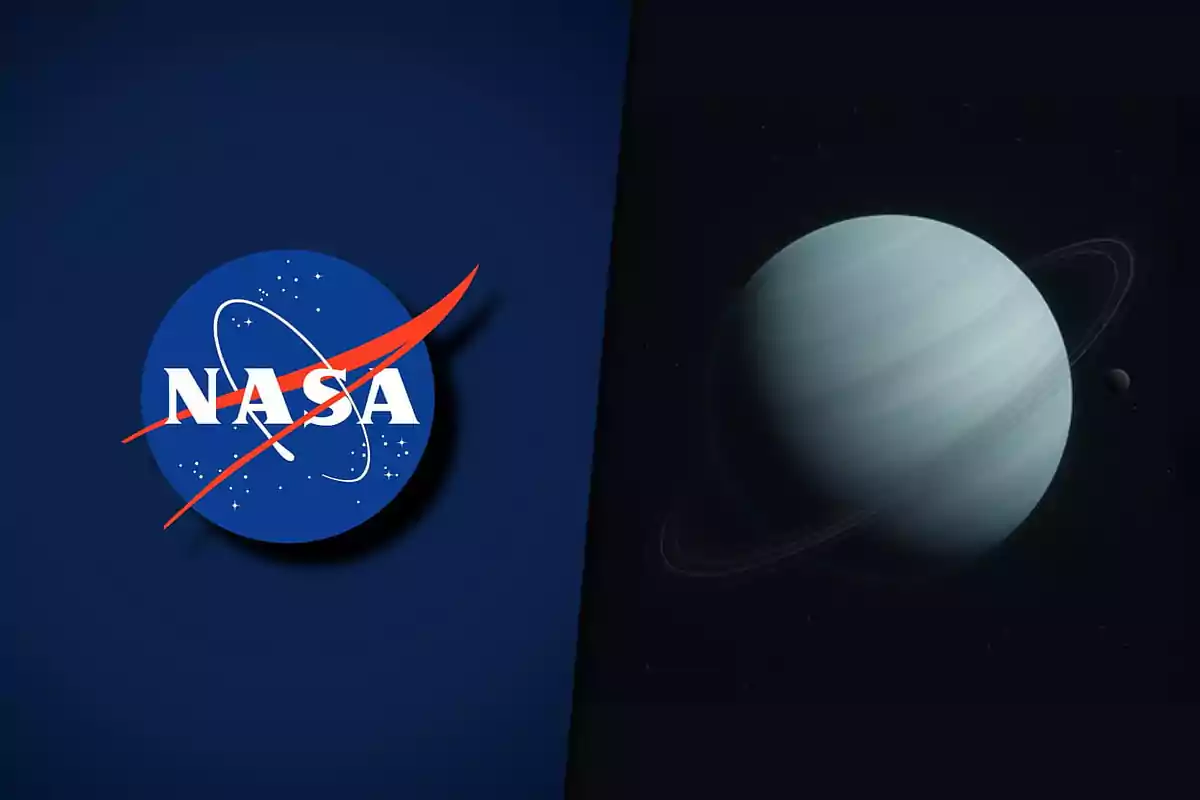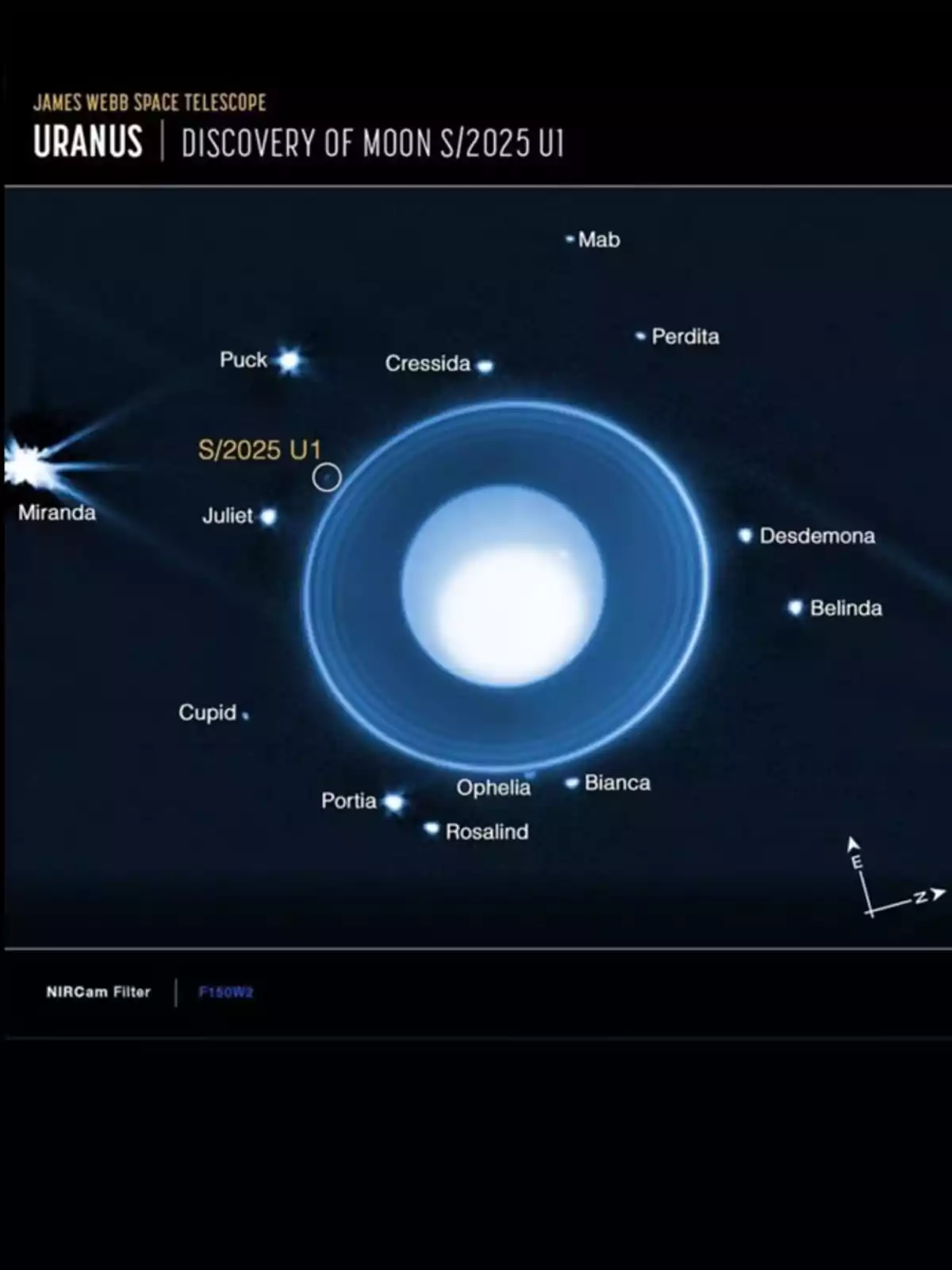
Uranus adds a baby moon of 10 km (6.2 miles): the smallest ever detected by NASA
NASA has confirmed a baby moon on Uranus with a diameter of just 10 km (6.2 miles), discovered by the James Webb Telescope
A team of astronomers has discovered a baby moon just 10 kilometers (6.2 miles) in diameter orbiting Uranus. The discovery surprised NASA and was made possible thanks to the precision of the James Webb telescope.
The new satellite, provisionally named S/2025 U1, has become the smallest of the 29 confirmed moons of the planet. Its detection raises new questions about the solar system and the dynamics of its celestial bodies.

A moon that went unnoticed for decades
The detection took place in February, when James Webb pointed toward Uranus and captured what no other telescope had achieved. Not even Voyager 2, which flew by the planet in 1986, was able to identify it.
"It's a small moon, but a very significant discovery," explained astronomer Maryame El Moutamid, who led the research. Its tiny size explains why it remained invisible for so many years.
Where it is and what its discovery means
The baby moon is located 56,000 kilometers (34,800 miles) from the center of Uranus and follows an almost circular orbit. Specialists believe it may have formed near its current position.

According to NASA, this satellite helps us understand how the rings interact with the smallest moons, providing clues about the evolution of the Uranian system.
James Webb and its contribution to science
James Webb was created to observe the edges of the universe, but its capabilities are also revolutionizing the study of our own cosmic neighborhood. The discovery, confirmed by NASA, ESA, and the Canadian Space Agency, marks a new advance in modern astronomy.
More posts: